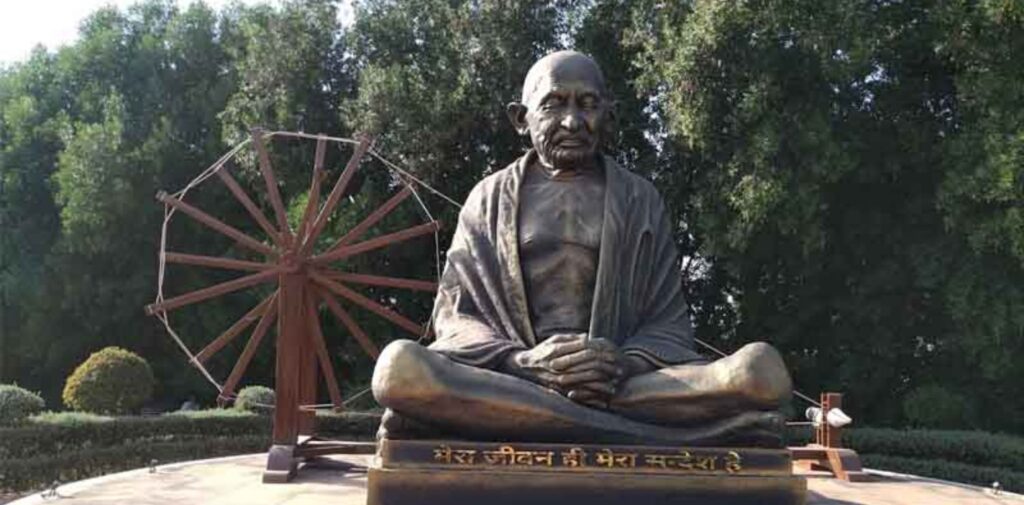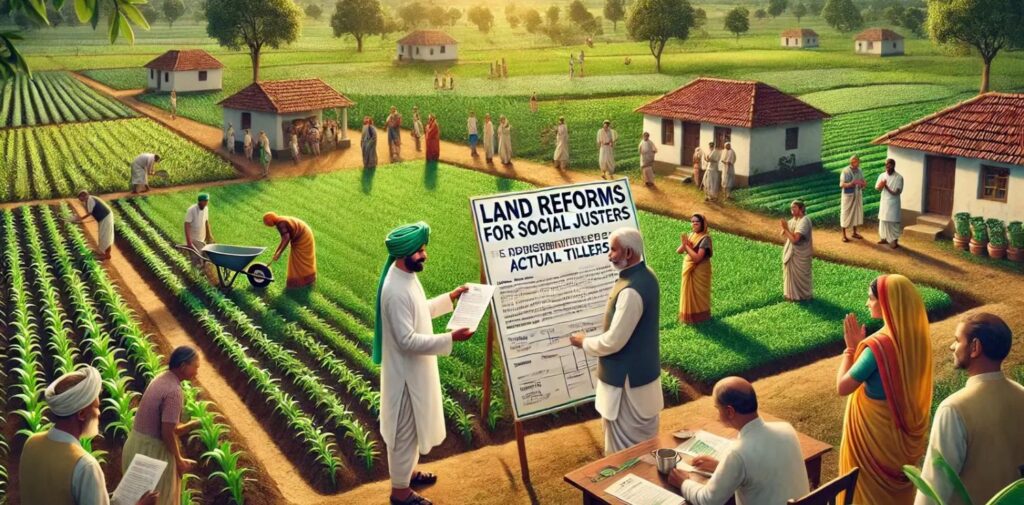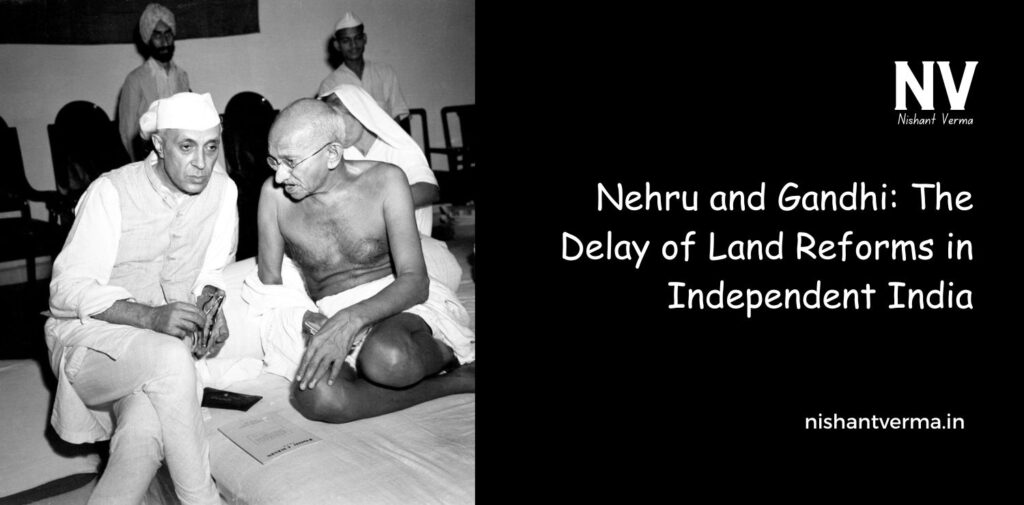India gained independence in 1947 after decades of struggle against British colonial rule. The promise of freedom came with hopes for economic and social equality for all citizens, particularly for the millions of farmers and landless laborers who were living in poverty. One of the critical areas that needed urgent attention was land reforms — redistributing land to the landless, improving agricultural productivity, and ensuring that the benefits of development reached the common people. However, despite the urgency of land reforms, the process was delayed for decades after independence. The role of India’s two most influential leaders, Jawaharlal Nehru and Mahatma Gandhi, played a significant part in this delay.
Understanding why land reforms did not happen quickly after independence requires a look at both leaders’ views on the issue and the challenges they faced in implementing reforms. While both Nehru and Gandhi were deeply concerned with social justice and the plight of the poor, their approaches to land reform and the political reality of post-independence India played key roles in slowing down this crucial change.
Gandhi’s Vision of Land Reforms
Mahatma Gandhi, the leader of India’s independence movement, had a unique view of land and its role in society. Gandhi’s vision was rooted in the idea of rural self-sufficiency. He believed that the future of India lay in its villages and that economic development should focus on rural areas, which were home to the majority of the population. Gandhi was concerned with the welfare of the farmers and the landless, but his ideas on land reforms were based on non-violence, self-reliance, and gradual change.
Gandhi’s approach to land reforms was not radical. He did not believe in the forceful redistribution of land or in breaking up the large estates owned by wealthy landlords. Instead, he advocated for voluntary reform. He believed that the wealthy landlords should voluntarily relinquish part of their land to help the landless, but he did not support a legal or forced redistribution of land. Gandhi’s ideal was that those who owned large amounts of land would understand their moral responsibility and give up their surplus land to improve the lives of the poor.
Gandhi’s reluctance to support forceful land reforms was influenced by his belief in the importance of maintaining social harmony. He feared that pushing for radical reforms could lead to social conflict and violence. In his view, the spirit of self-sacrifice was more important than legal measures for land redistribution.
This vision of voluntary reform and gradual change stood in contrast to the immediate and forceful action needed to address the deep-rooted inequality in land ownership. Gandhi’s ideas, although well-intentioned, lacked the urgency and practical solutions required to bring about significant change for the landless poor.

Nehru’s Approach to Land Reforms
Jawaharlal Nehru, India’s first Prime Minister, shared Gandhi’s concern for the welfare of the rural poor. Nehru recognized the importance of land reforms in addressing economic inequality and improving agricultural productivity. He was aware that landlessness and large estates dominated by a few landlords were key barriers to India’s progress. Nehru, however, had a more modern and state-driven approach to land reforms compared to Gandhi’s voluntary model.
Nehru envisioned land reforms as part of the broader process of modernization and industrialization. He wanted to transform Indian agriculture by promoting cooperative farming, reducing the power of landlords, and encouraging the redistribution of land. Nehru also believed in the role of the state in ensuring social justice. Under his leadership, the government passed several laws to reduce the power of landlords and facilitate land redistribution.
However, while Nehru had the political will to initiate land reforms, several factors contributed to their slow implementation. First, the political landscape in post-independence India was complex. Nehru was dealing with a diverse and divided country, where land ownership patterns were deeply entrenched. Many of the leaders in Congress and regional political parties had strong ties to the landowning classes, which made it difficult to push through radical reforms. Landowners often had significant influence over local politics, and their opposition to land reforms was a major barrier.
Second, Nehru’s focus was also on modernizing the country through industrialization. This often took precedence over rural reforms, including land redistribution. Nehru believed that the country’s economic growth depended on building industries and urbanizing the country, which he saw as essential for India’s future. As a result, the urgency of land reforms was sometimes overshadowed by these industrial and developmental priorities.
Third, land reforms were difficult to implement due to the lack of strong administrative machinery in rural areas. Many parts of India, especially the villages, lacked effective governance and the administrative capacity to enforce land redistribution laws. The bureaucracy, which was needed to implement these laws, was often under-resourced, and many landlords were able to manipulate the system or resist reforms.

The Role of Politics and Social Factors
In addition to the views of Gandhi and Nehru, the political realities of post-independence India played a critical role in delaying land reforms. The Indian National Congress, which had been the central force in the struggle for independence, continued to dominate politics after 1947. However, many Congress leaders had strong connections with the rural elite and the landowning classes. These leaders were reluctant to challenge the established land ownership structures, as doing so would risk losing political support in rural areas.
In many regions of India, the power of landlords and the zamindari system (the system of land tenure under which landlords had significant control over agricultural land) was deeply entrenched. This system had been in place for centuries, and it was not easy to dismantle. Moreover, India’s diverse society, with its complex social hierarchies based on caste, made it difficult to push through reforms that would benefit the landless and marginalized sections of society.
Land reforms often became a political issue, with different parties and groups having varying views on how land should be redistributed. While the Congress Party under Nehru promoted reforms, it often struggled to implement them due to the resistance from powerful political factions that were allied with landowners. As a result, the central government’s efforts to bring about significant changes in land distribution were limited.

The Gradual Progress of Land Reforms
Despite the slow pace of reform, India did see some progress in land redistribution during the early years of independence. The government passed laws to abolish the zamindari system, introduce land ceiling laws (which limited the amount of land any one individual could own), and distribute surplus land to the landless. These laws were intended to break up large estates and distribute land more equitably.
However, the implementation of these laws was uneven across different states. While some states, like West Bengal and Kerala, made significant progress in implementing land reforms, others were slow to follow. The failure to implement comprehensive land reforms in many parts of the country meant that the gap between the rich and the poor, particularly in rural areas, continued to widen.
Conclusion: The Legacy of Delayed Land Reforms
The delay in land reforms in post-independence India was a consequence of several factors, including the political vision of Gandhi and Nehru, the complexities of Indian society, and the resistance from powerful landowning classes. Gandhi’s emphasis on voluntary and gradual reform, combined with Nehru’s focus on industrial development and centralization, meant that land reforms were not prioritized in the immediate years after independence. The lack of strong political will and administrative capacity, combined with resistance from vested interests, further delayed the progress of land reforms.
While India eventually did make strides in land redistribution in certain regions, the full potential of land reforms was never realized. The failure to fully address the issue of land inequality in the early years of independence has had long-lasting effects on rural poverty and inequality. Even today, land reforms remain a critical issue in India, and the legacy of delayed reforms continues to affect the country’s rural population.
In retrospect, the failure to push through comprehensive land reforms early on was a missed opportunity for India to create a more equitable society. While Gandhi and Nehru had noble intentions, their approaches to land reforms were not radical enough to address the deep-rooted inequality that existed in India’s rural economy. The lessons from this delay are important for policymakers today as they continue to tackle the challenges of land ownership, rural development, and social justice.




